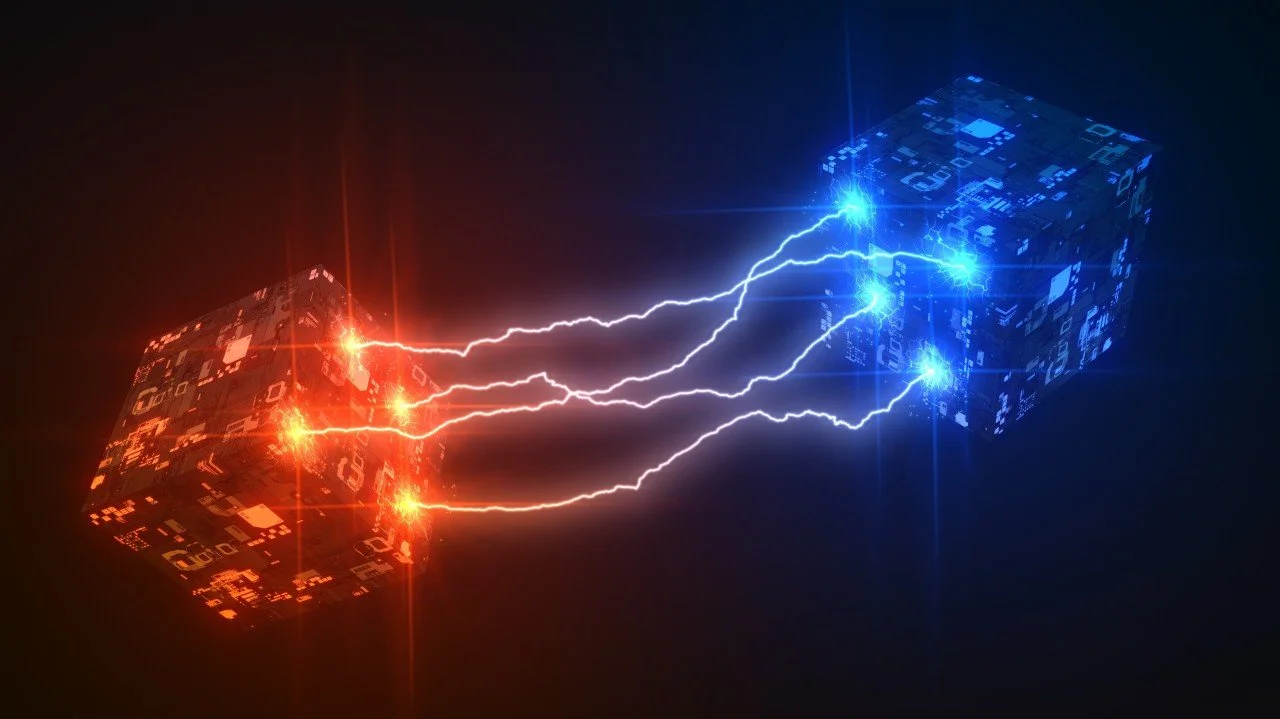A 2024 Optica paper shows quantum networking can operate alongside 400 Gbps conventional telecommunications in shared fibre infrastructure
A research paper published by Optica in 2024 has demonstrated what many considered a critical milestone for practical quantum networking: quantum teleportation operating successfully in optical fibres simultaneously carrying high-power classical telecommunications traffic. This achievement addresses one of the fundamental questions about whether quantum networks can be deployed at scale using existing fibre infrastructure.
The Infrastructure Challenge
The optical fibre infrastructure and telecommunications technology underlying the Internet have become the foundation for developing quantum networks capable of applications including quantum-enhanced cryptography, sensing, and networked quantum computing. However, a significant obstacle has remained: the majority of existing fibre infrastructure already carries conventional telecommunications traffic, and the economic cost of leasing or installing dedicated new fibre is substantial.
The viability of large-scale quantum networking hinges on the ability to propagate quantum signals in the same fibre as high-power classical signals, a challenge that has proven technically formidable.
The Noise Problem
While quantum and classical signals can share a single fibre through wavelength division multiplexing, research dating back decades has shown that noise photons from inelastic scattering of high-power classical light can obscure the detection of sub-photon-level quantum signals. Among potential noise sources, spontaneous Raman scattering (SpRS) proves most problematic due to its broadband spectrum, meaning noise can never be entirely eliminated. Without careful design, a fundamental trade-off emerges between conventional and quantum networking capabilities.
Previous experiments have explored quantum-classical coexistence for various applications using weak coherent state sources, entangled photon pairs, Bell state measurements, continuous variables, and squeezed light. Despite significant achievements, all experiments to date have focused on systems that directly transmit quantum information between network nodes. Advanced quantum applications, however, require something more sophisticated: the disembodied transfer of quantum states between users.
Quantum Teleportation: A Game-Changing Capability
Quantum teleportation, enabled by the non-local properties of quantum entanglement, allows the transfer of a quantum state between two distant physical systems without direct transmission. This capability plays a foundational role in advanced applications including quantum relays, quantum repeaters, networking quantum computers, and numerous other quantum science and technology applications.
Recent years have seen impressive progress implementing teleportation-based networks in quantum-dedicated fibre. However, teleportation over fibres carrying conventional communications had not been demonstrated, until now. Many questions regarding the feasibility, limitations, and potential benefits of teleportation in quantum-classical networking have remained unexplored.
The Breakthrough Demonstration
The research team demonstrated a three-node quantum state teleportation system operating over 30.2 km of optical fibre simultaneously carrying high-power C-band classical communications at 400 Gbps. Teleportation was performed via a joint Bell state measurement on a single photon and one member of an entangled Bell state photon pair.
Using wavelength multiplexing of quantum and classical signals, a heralded single photon carrying a polarization-encoded qubit and one photon of an entangled Bell state photon pair were distributed over approximately 15 km of spooled fibre each to undergo a Bell state measurement near the fibre's midpoint, while classical light traversed the full 30.2-km link plus an additional 48 km of deployed fibre.
Protecting Quantum Fidelity
The researchers implemented multiple techniques to mitigate degradation from noise photons:
Optimal Wavelength Selection: At quantum source nodes, the team utilized the low SpRS noise in the O-band from strong C-band light, specifically allocating coexisting photons to 1290-nm quantum channels to achieve nearly the lowest SpRS generation probability using telecom-band wavelength engineering.
Spectro-Temporal Filtering: At quantum receivers, narrow-band spectro-temporal filtering rejected the detection of uncorrelated SpRS photons.
Coincidence Detection: Each source used spontaneous parametric down-conversion to generate photon pairs with strong temporal correlations, further rejecting noise through coincidence detection of four photons.
Impressive Performance Metrics
The research first demonstrated that this approach allows high-power C-band communications to have no significant impact on entanglement distribution to the BSM node or Hong-Ou-Mandel interference between independent heralded photons, the underlying operations of the quantum teleportation protocol.
Quantum state teleportation was then performed with fidelity maintained at elevated C-band launch powers as high as 74 mW (18.7 dBm)—on the order of the highest powers achieved using direct transmission of quantum states. The researchers project this could support multiple classical channels totaling many terabits per second in aggregate data rates.
Theoretical Insights and Future Directions
Using theoretical modeling, the paper discusses the trade-offs of using noisier quantum wavelength channels (such as C-band), the effects of storage in imperfect quantum memories, and comparisons to methods using direct qubit transmission.
A Unified Infrastructure Vision
This experiment demonstrates approaches for integrating many key classical and quantum network components simultaneously in the same fibres, including high-rate classical signals, optical amplifiers, single photon and entangled photon pair distribution, and multi-qubit operations such as Bell state measurements.
The results show the feasibility of advanced quantum and classical network applications operating within a unified fibre infrastructure, a critical requirement for the practical, large-scale deployment of quantum networking technology. Rather than requiring entirely separate networks, quantum capabilities can be integrated into existing telecommunications infrastructure, dramatically reducing deployment costs and accelerating the timeline for quantum network applications.
This breakthrough opens the door to a future where quantum-enhanced security, distributed quantum computing, and advanced sensing capabilities operate alongside conventional Internet traffic in the same optical fibres that already connect the world.



